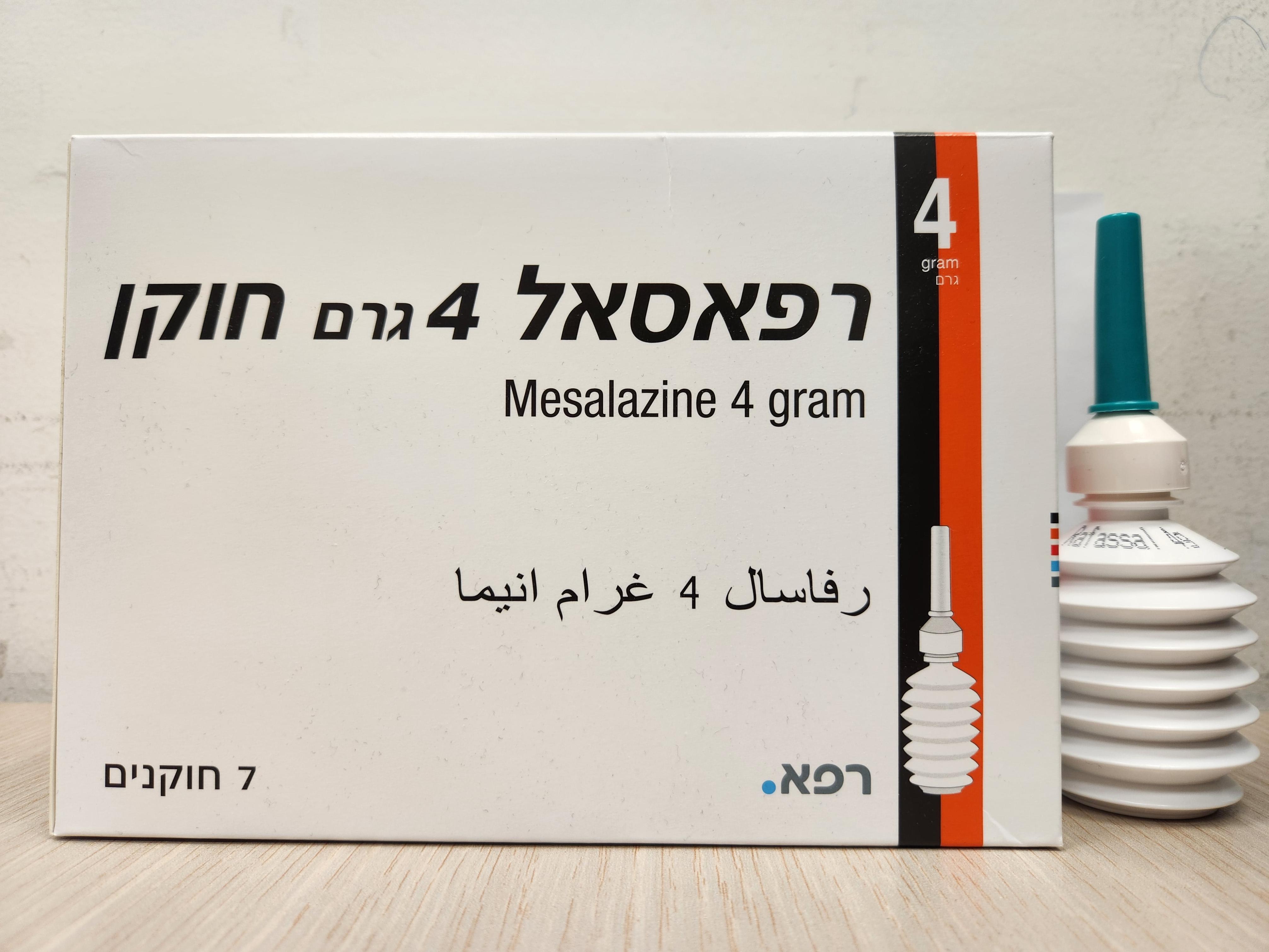Quest for the right Drug

ראפאסאל 4 חוקן גרם RAFASSAL 4 GRAM ENEMA (MESALAZINE)
תרופה במרשם
תרופה בסל
נרקוטיקה
ציטוטוקסיקה
צורת מתן:
רקטלי : RECTAL
צורת מינון:
חוקן : ENEMA
עלון לרופא
מינוניםPosology התוויות
Indications תופעות לוואי
Adverse reactions התוויות נגד
Contraindications אינטראקציות
Interactions מינון יתר
Overdose הריון/הנקה
Pregnancy & Lactation אוכלוסיות מיוחדות
Special populations תכונות פרמקולוגיות
Pharmacological properties מידע רוקחי
Pharmaceutical particulars אזהרת שימוש
Special Warning עלון לרופא
Physicians Leaflet
Special Warning : אזהרת שימוש
4.4 Special warnings and precautions for use Blood tests (differential blood count; liver function parameters such as ALT or AST; serum creatinine) and urinary status (dip-sticks) should be determined prior to and during treatment, at the discretion of the treating physician. As a guideline, follow-up tests are recommended 14 days after commencement of treatment, then a further two to three tests at intervals of 4 weeks. If the findings are normal, follow-up tests should be carried out every 3 months. If additional symptoms occur, tests should be performed immediately. Caution is recommended in patients with impaired hepatic function. Mesalazine should not be used in patients with impaired renal function. Mesalazine- induced renal toxicity should be considered if renal function deteriorates during treatment. If this is the case, Rafassal enemas should be discontinued immediately. Cases of nephrolithiasis have been reported with the use of mesalazine including stones with a 100% mesalazine content. It is recommended to ensure adequate fluid intake during treatment. Mesalazine may produce red-brown urine discoloration after contact with sodium hypochlorite bleach (e.g., in toilets cleaned with sodium hypochlorite contained in certain bleaches). Serious blood dyscrasias have been reported very rarely with mesalazine. Hematological investigations should be performed if patients suffer from unexplained haemorrhages, bruises, purpura, anaemia, fever or pharyngolaryngeal pain. Rafassal enemas should be discontinued in case of suspected or confirmed blood dyscrasia. Cardiac hypersensitivity reactions (myocarditis, and pericarditis) induced by mesalazine have been rarely reported. Rafassal enemas should then be discontinued immediately. Patients with pulmonary disease, in particular asthma, should be very carefully monitored during a course of treatment with Rafassal Enemas. Severe cutaneous adverse reactions Severe cutaneous adverse reactions (SCARs), including drug reaction with eosinophilia and systemic symptoms (DRESS), Stevens-Johnson syndrome (SJS) and toxic epidermal necrolysis (TEN), have been reported in association with mesalazine treatment. Mesalazine should be discontinued, at the first appearance of signs and symptoms of severe skin reactions, such as skin rash, mucosal lesions, or any other sign of hypersensitivity. Patients with a history of adverse drug reactions to preparations containing sulphasalazine should be kept under close medical surveillance on commencement of a course of treatment with mesalazine. Should the enema cause acute intolerance reactions such as abdominal cramps, acute abdominal pain, fever, severe headache and rash, therapy should be discontinued immediately. Each bottle of enema contains sodium benzoate (60 mg per bottle), which may cause local irritation. Each bottle of enema contains potassium metabisulfite, which may rarely cause severe hypersensitivity reactions and bronchospasm.
Effects on Driving
4.7 Effects on ability to drive and use machines Mesalazine has no or negligible influence on the ability to drive and use machines.

שימוש לפי פנקס קופ''ח כללית 1994
Maintenance of remission in ulcerative colitis, acute episodes of Crohn's disease
תאריך הכללה מקורי בסל
01/01/1995
הגבלות
תרופה שאושרה לשימוש כללי בקופ'ח
מידע נוסף
